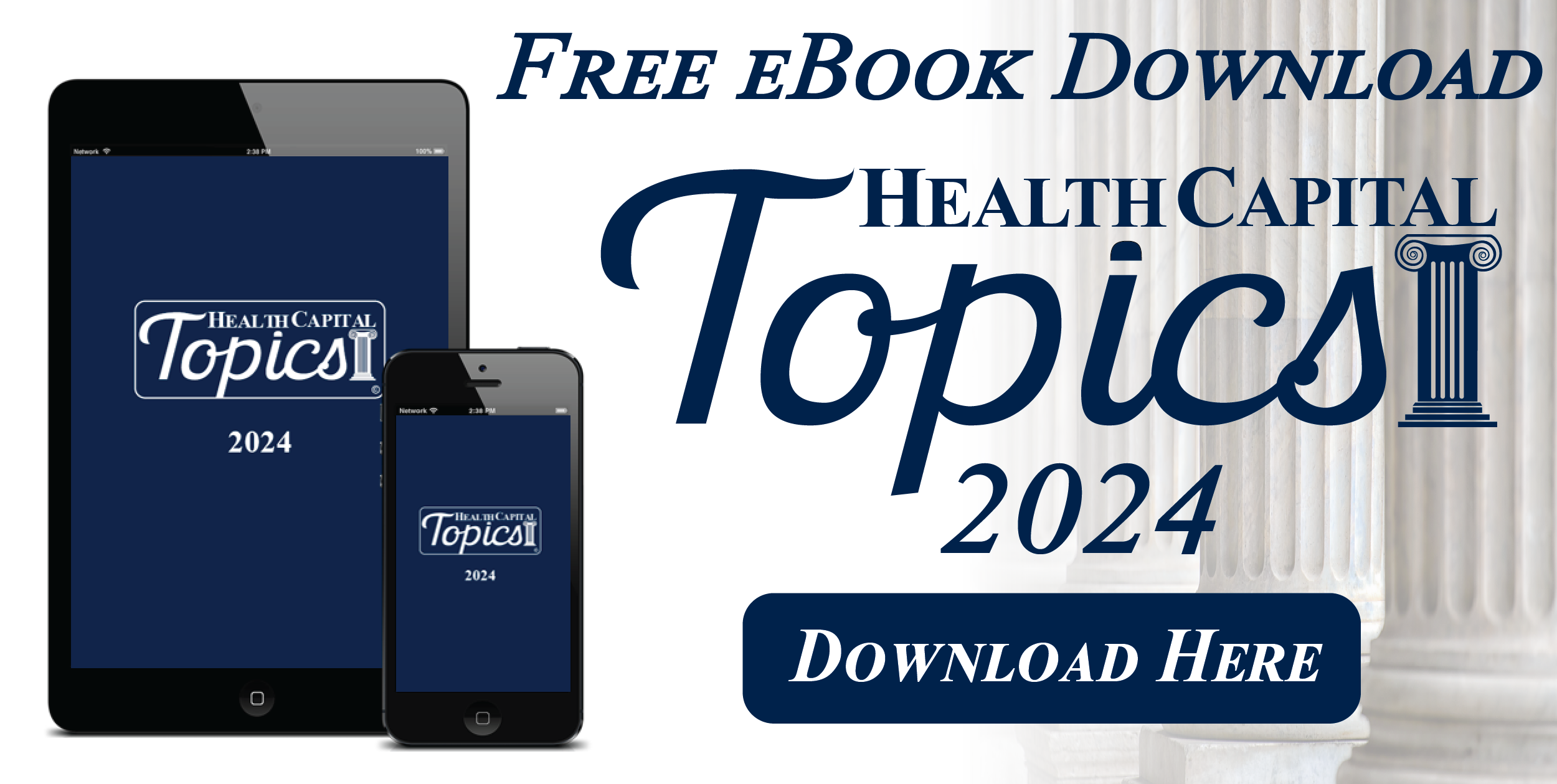In the latest iteration of Trump Administration healthcare cuts, the Centers for Medicare & Medicaid Services (CMS) announced on March 12, 2025 that four Center for Medicare and Medicaid Innovation (CMMI) payment models would be sunset at the end of 2025, earlier than originally scheduled.1 Cutting these models, which decision was based on “a comprehensive and data-driven review of [CMS’s] model portfolio,” are anticipated to save nearly $750 million (although the source of these savings was not detailed).2 This Health Capital Topics article discusses the models being ended and the impact on healthcare stakeholders.
The CMMI was created by the Patient Protection & Affordable Care Act (ACA) to “test new payment and delivery models to lower costs and improve quality in government healthcare programs.”3 CMMI models “are time-limited experiments that provide a controlled environment to determine, through rigorous evaluation, what approaches should be expanded nationwide, what specific components of an approach need further testing in successor models and what approaches are not viable for expansion.”4 CMMI currently operates 23 payment models.5
The four models ending on December 31, 2025 are:
The Primary Care First (PCF) model (original end date: 2026);
The Maryland Total Cost of Care model (original end date: 2026);
The End-Stage Renal Disease (ESRD) Treatment Choices (ETC) model (original end date: 2027); and
The Making Care Primary (MCP) model (original end date: 2034).
6
The PCF model, which began in 2021, has approximately 2,100 participating practices and 17 payor partners across 26 regions.7 The model aims to advance primary care practices and seeks to remove from clinicians the financial risks that they face from administrative drains and provide more performance-based payments.8 There are two PCF payment model options: the first model is for physicians treating general populations, and the second model is for physicians treating high need populations.9 With both PCF payment model options, Medicare pays a risk-adjusted professional population-based payment with a flat primary care fee visit.10
The Maryland Total Cost of Care model, which began in 2019, builds on the Maryland All-Payer Model (2014-2018), wherein Maryland hospitals received a fixed amount of revenue from payors each year, by adding new primary care investments.11 Notably, the model reduced Medicare net spending by $689 million in its first three years.12
The ETC model, which began in 2021, aims to “encourage greater use of home dialysis and kidney transplants for Medicare beneficiaries with ESRD” through payment adjustments, “while reducing Medicare expenditures and preserving or enhancing the quality of care furnished to beneficiaries with ESRD.”13 Approximately 30% of ESRD facilities participate in the mandatory model.14
The MCP model, a 10.5-year model that began in 2024 and has 117 participants and 772 practices across eight states, was built upon previous primary care models such as the Maryland Primary Care Program (MDPCP), the PCF model, and the Comprehensive Primary Care (CPC/CPC+) Model.15 The model aims to improve the coordination and management of care, enable primary care clinicians to form relationships with healthcare specialists, and form community-based connections to address the health needs of patients, as well as health-related social needs such as nutrition and housing.16 The goal of this model is to transform the delivery of healthcare, especially in primary care, through three major parts: (1) community integrations, which will address social needs that are related to health; (2) care management, where participants will offer support services; and (3) care integration, where primary care providers will align with specialists.17
The agency explained that “[a]s is the nature of innovation, not every model will work, and the center must be efficient and effective in its response.”18 As specifically regards the Primary Care First model, CMS affirmed that “[p]rimary care remains a foundational component of [CMMI’s] strategy. The early termination of the PCF and MCP models does not signal a retreat from [CMMI’s] support of primary care providers, but rather a need to focus on different approaches that are consistent with [CMMI’s] statutory mandate and produce savings.”19
In addition to ending these models early, CMS will no longer implement two announced but not yet implemented demonstrations aimed at improving prescription drug access and affordability:
The Medicare $2 Drug List, which aimed to cap out-of-pocket costs for generic drugs at $2 per month; and
The Accelerating Clinical Evidence model.
20
Further, the Vermont All-Payer ACO Model and the Maternal Opioid Misuse Model will reportedly not be renewed at the end of 2025.21 The agency is also considering ways to scale back the Integrated Care for Kids (InCK) model (original end date: 2026), which seeks to imrpove quality of pediatric care through “prevention, early identification and treatment of behavioral and physical health needs.”22 Notably, CMS declined to comment on the future of the Medicare Shared Savings Program for accountable care organizations, which program conservatives have recommended cancelling, or the ACO Realizing Equity, Access and Community Health (ACO REACH) model, which is scheduled to sunset at the end of 2026.23
While it is common for new presidential administrations to end or modify some payment models at the beginning of a term, the uncertainty that comes with these abrupt endings render it difficult for providers to fully participate and invest in these models.24 As to what’s next, CMMI “plans to announce a new strategy based on guiding principles to make Americans healthier by preventing disease through evidence-based practices, empowering people with information to make better decisions, and driving choice and competition.”25 A timeline for this new strategy was not disclosed.
“Statement on CMS Innovation Center Aligning Portfolio with Statutory Obligation” Centers for Medicare & Medicaid Services, March 12, 2025, https://www.cms.gov/newsroom/press-releases/statement-cms-innovation-center-aligning-portfolio-statutory-obligation (Accessed 3/20/25); “CMS Innovation Center Announces Model Portfolio Changes to Better Protect Taxpayers and Help Americans Live Healthier Lives” Centers for Medicare & Medicaid Services, March 12, 2025, https://www.cms.gov/newsroom/fact-sheets/cms-innovation-center-announces-model-portfolio-changes-better-protect-taxpayers-and-help-americans (Accessed 3/20/25).
“CMS Innovation Center Announces Model Portfolio Changes to Better Protect Taxpayers and Help Americans Live Healthier Lives” Centers for Medicare & Medicaid Services, March 12, 2025, https://www.cms.gov/newsroom/fact-sheets/cms-innovation-center-announces-model-portfolio-changes-better-protect-taxpayers-and-help-americans (Accessed 3/20/25).
“CMMI cancels 4 payment models early” By Emily Olsen, Healthcare Dive, March 13, 2025, https://www.healthcaredive.com/news/cms-innovation-center-cancels-payment-models-early/742424/ (Accessed 3/20/25).
Centers for Medicare & Medicaid Services, March 12, 2025.
Olsen, Healthcare Dive, March 13, 2025.
Centers for Medicare & Medicaid Services, March 12, 2025.
“Primary Care First Model Options” Centers for Medicare & Medicaid Services, https://www.cms.gov/priorities/innovation/innovation-models/primary-care-first-model-options (Accessed 3/20/25).
“Scoop: Trump Medicare center to cancel some payment trials” By Maya Goldman, Axios, March 12, 2025, https://www.axios.com/2025/03/12/medicare-innovation-center-cancels-projects (Accessed 3/20/25).
“Maryland Total Cost of Care Model: Evaluation of the First Four Years (2019–2022)”Centers for Medicare & Medicaid Services Center for Medicare and Medicaid Innovation, Findings at a Glance, available at: https://www.cms.gov/priorities/innovation/data-and-reports/2024/md-tcoc-1st-progress-rpt-aag (Accessed 3/2/25).
“ESRD Treatment Choices (ETC) Model” Centers for Medicare and Medicaid Services, https://www.cms.gov/priorities/innovation/innovation-models/esrd-treatment-choices-model (Accessed 3/20/25).
“Making Care Primary (MCP) Model” Centers for Medicare and Medicaid Services, July 10, 2024, https://www.cms.gov/priorities/innovation/innovation-models/making-care-primary (Accessed 3/20/25).
“CMS pilot program aims to boost value-based primary care” By Victoria Turner, Modern Healthcare, June 8, 2023, https://www.modernhealthcare.com/politics-policy/cms-debuts-making-care-primary-model-promote-value-based-care (Accessed 6/9/23).
Centers for Medicare & Medicaid Services, March 12, 2025.
Olsen, Healthcare Dive, March 13, 2025.
“CMMI to cut participation in payment models, estimates $750M in savings” By Noah Tong, Fierce Healthcare, March 12, 2025, https://www.fiercehealthcare.com/regulatory/cmmi-cut-short-payment-models-estimates-750m-savings (Accessed 3/20/25).
Centers for Medicare & Medicaid Services, March 12, 2025; Tong, Fierce Healthcare, March 12, 2025.
“CMS terminates 4 Medicare pay models ahead of schedule” By Bridget Early, Modern Healthcare, March 12, 2025, https://www.modernhealthcare.com/policy/cms-terminates-medicare-payment-models (Accessed 3/20/25).
Goldman, Axios, March 12, 2025.
“Statement on CMS Innovation Center Aligning Portfolio with Statutory Obligation” Centers for Medicare & Medicaid Services, March 12, 2025, https://www.cms.gov/newsroom/press-releases/statement-cms-innovation-center-aligning-portfolio-statutory-obligation (Accessed 3/20/25).





